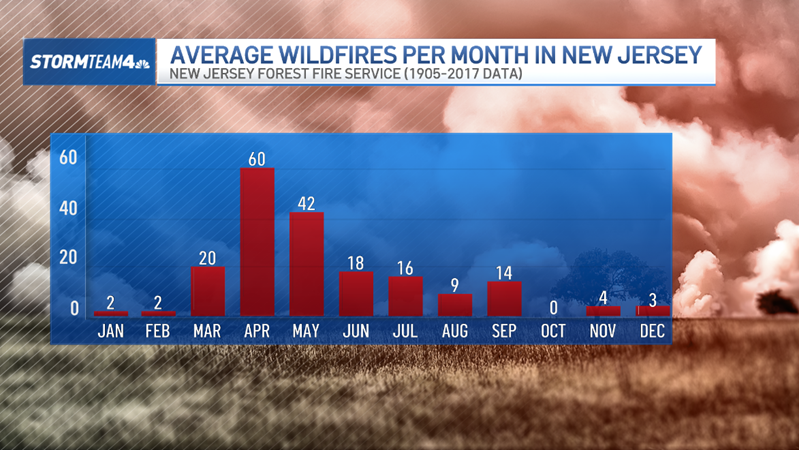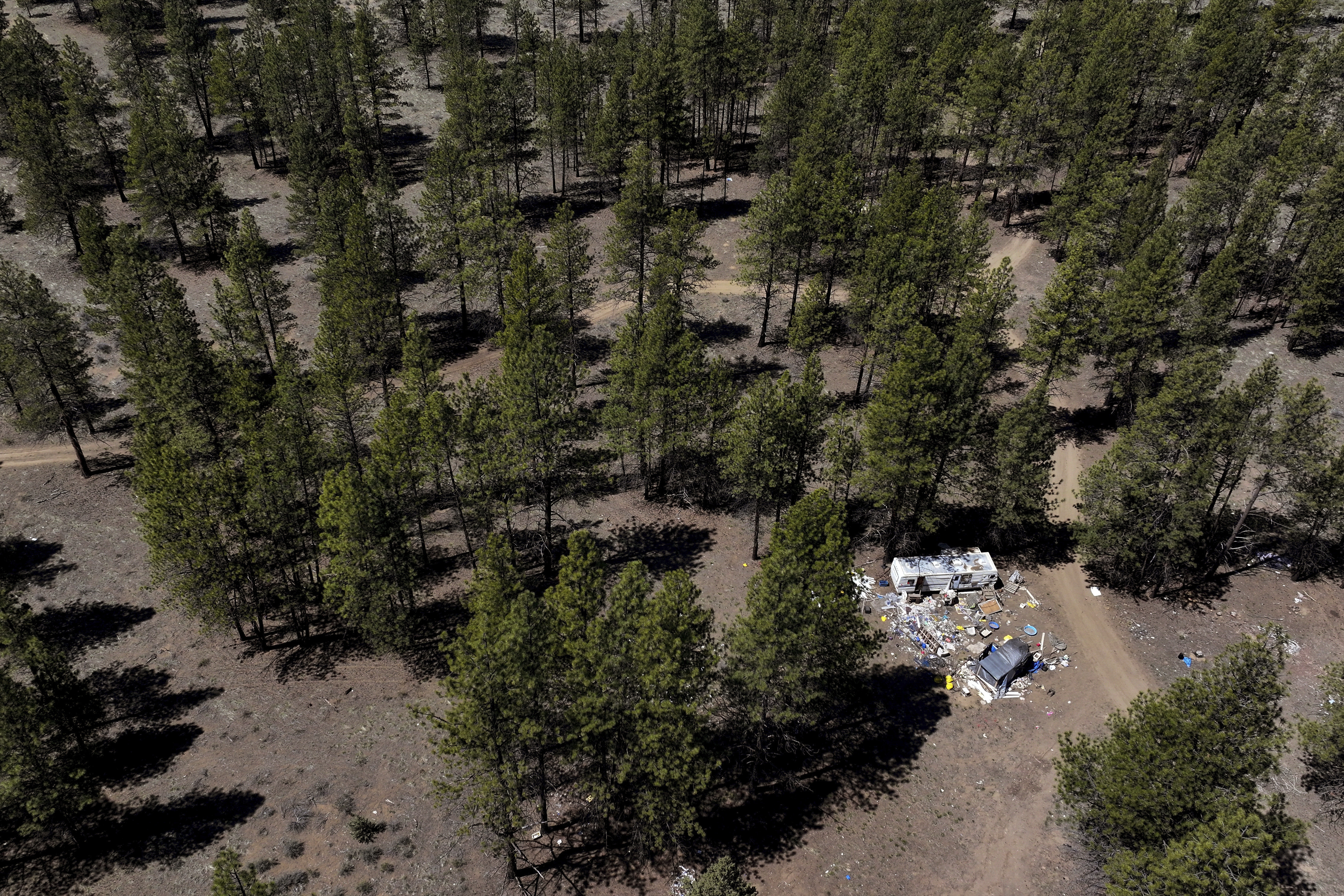NJ Wildfire Arson: Teen Charged – What You Need to Know
Teen Accused: Did Arson Spark Devastating New Jersey Wildfire?
Introduction: The Inferno and the Accusation
Imagine the scene: smoke billowing, flames raging, and acres of precious New Jersey woodland going up in smoke. A nightmare scenario, right? Well, that nightmare became a reality in Ocean County, and now a 19-year-old is facing some serious accusations. But did he really do it? This is the question hanging over the investigation of the massive wildfire that recently scorched the landscape.
The Accused: Joseph Kling Arrested
Joseph Kling, 19, of Ocean Township (Waretown), found himself in handcuffs on Thursday, April 24th. The charges? Aggravated arson and arson, according to officials. This is a big deal, and Kling is presumed innocent until proven guilty. But the accusations are serious.
The Prosecutor's Confidence
Ocean County Prosecutor Bradley Billhimer didn't mince words during a press conference. “We are confident that he intentionally set a fire,” Billhimer stated. That's a strong statement. But confidence alone doesn't equal guilt. What evidence do they have?
The Investigation: Unveiling the Evidence
Billhimer remained tight-lipped about the specifics of the investigation. It's like watching a magician refuse to reveal their secrets. He did, however, hint at some high-tech wizardry. “We used some investigative techniques that I don’t necessarily want to disclose at this time,” Billhimer said. “But, some technological advances, I can say, publicly, that we were able to place him at the scene.” So, what kind of tech are we talking about? Cell phone data? Surveillance footage? We can only speculate for now.
The Timeline: April 22nd and the First Signs
The timeline is crucial. On April 22nd, around 9:45 a.m., the first wisps of smoke alerted officials. It was the beginning of what would become a devastating wildfire. Was Kling already at the scene at that time? The investigation likely hinges on pinpointing his location and activities around that critical moment.
The Charges: Arson and Aggravated Arson Explained
Let's break down the charges. What exactly is arson, and why is aggravated arson even more serious?
Arson: Intentionally Setting a Fire
Arson, in its simplest form, is intentionally setting fire to property. It's not just about lighting a match; it's about the intent behind the act. Did Kling deliberately ignite the fire, or was it an accident? The prosecution will need to prove intent beyond a reasonable doubt.
Aggravated Arson: The Added Danger
Aggravated arson takes the crime to another level. This usually involves circumstances that make the act particularly dangerous, such as:
- Risk of death or serious injury to others
- Damage to an inhabited structure
- Use of explosives
If the fire endangered lives or caused significant damage to homes or businesses, the charges could be elevated to aggravated arson, leading to a much harsher sentence.
The Potential Consequences: What Kling Could Face
The stakes are incredibly high. Depending on the severity of the charges and the extent of the damage, Kling could be facing a lengthy prison sentence, hefty fines, and a criminal record that could impact his life for years to come.
The Impact on the Community: Beyond the Flames
Wildfires don't just destroy trees; they devastate communities. Homes are threatened, lives are disrupted, and the emotional toll on residents can be immense. This is why arson is taken so seriously. It's not just a crime against property; it's a crime against the entire community.
The Legal Process: What Happens Next?
Kling's arrest is just the beginning of a long legal process. He'll likely be arraigned, where he'll formally hear the charges against him. Then, there will be pre-trial hearings, potential plea negotiations, and possibly a trial. It's a complex and often drawn-out process.
The Role of the Defense Attorney
Kling has the right to an attorney, who will be tasked with defending him against the charges. The defense attorney will investigate the evidence, challenge the prosecution's case, and advocate for Kling's rights.
The Burden of Proof: Beyond a Reasonable Doubt
The prosecution bears the burden of proving Kling's guilt beyond a reasonable doubt. This means they must present enough evidence to convince a jury that there is no other logical explanation for the fire than that Kling intentionally started it.
The Ongoing Wildfire: Battling the Blaze
While the legal proceedings unfold, firefighters are still battling the wildfire. It's a race against time to contain the flames and prevent further damage. These are real-life heroes putting their lives on the line.
The Environmental Impact: A Devastating Loss
Beyond the immediate threat to homes and businesses, the wildfire has had a devastating impact on the environment. Acres of forest have been destroyed, wildlife habitats have been lost, and the air quality has been affected. The long-term consequences could be significant.
Prevention: Learning from this Tragedy
This incident serves as a stark reminder of the importance of wildfire prevention. Careless actions, like improperly discarded cigarettes or unattended campfires, can have catastrophic consequences. We all have a responsibility to protect our forests and communities.
Conclusion: Justice and Accountability
The case of Joseph Kling is a complex and serious one. He stands accused of a crime that has had a devastating impact on Ocean County. The investigation is ongoing, and the legal process will play out in the coming months. The outcome will determine not only Kling's fate but also send a message about accountability and the consequences of reckless behavior. This situation highlights the importance of understanding the dangers of fire and the responsibility we all share to protect our communities and the environment.
Frequently Asked Questions (FAQs)
1. What specific evidence links Joseph Kling to the wildfire?
While authorities have been tight-lipped about the details, they've mentioned using "technological advances" to place him at the scene. This suggests potential evidence like cell phone location data, surveillance footage, or even forensic analysis of items found at the fire's origin.
2. What is the difference between arson and aggravated arson in New Jersey?
Arson is the intentional setting of a fire to property. Aggravated arson involves additional factors that increase the risk and severity of the crime, such as the potential for death or serious injury, damage to an occupied building, or the use of explosives.
3. What are the potential penalties for aggravated arson in New Jersey?
The penalties for aggravated arson in New Jersey can be severe, including lengthy prison sentences (potentially decades), substantial fines, and a criminal record. The specific penalties will depend on the circumstances of the case and the extent of the damage caused.
4. How can I help prevent wildfires in my community?
There are several steps you can take: be extremely careful with open flames (campfires, barbecues), properly dispose of cigarettes, clear brush and flammable materials around your home, and stay informed about local fire restrictions and advisories.
5. What are the long-term environmental impacts of a large wildfire?
The environmental impacts can be far-reaching and long-lasting, including soil erosion, water contamination, loss of wildlife habitat, air pollution, and increased risk of future floods and landslides. The recovery process for a burned area can take years, if not decades.





